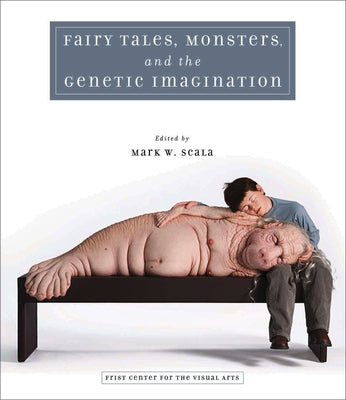Vanderbilt University Press
Fairy Tales, Monsters, and the Genetic Imagination
Fairy Tales, Monsters, and the Genetic Imagination
Couldn't load pickup availability
Discussing how artists adapt traditional stories to give mythic form to the very real dilemmas of contemporary life, Jack Zipes's "Fairy-Tale Collisions" centers on Paula Rego, Kiki Smith, and Cindy Sherman. From a generation of women who have attained prominence since the 1980s, these artists alter fairy-tale imagery to subvert or rewrite social roles and codes.
In "Metamorphosis of the Monstrous," Marina Warner discusses works in the exhibition in the context of historical conceptions of monsters as expressions of alterity, bestiality, or sinfulness. Her reminder that contemporary monster images offer "a promise and a warning about the variety, heterogeneity, and possible combinations and recombinations in the order of things" sets the stage for Suzanne Anker's essay, punningly titled "The Extant Vamp (or the) Ire of It All: Fairy Tales and Genetic Engineering." Considering representations of hybrid bodies by Patricia Piccinini, Janaina Tschape, Saya Woolfalk, and others, which evoke imagined beings of the past as a way to envision the recombinant creatures that may lie in the future, Anker shows how artists explore the social, ethical, and future implications of biological design and enhanced evolution.
Accompanying an exhibition of contemporary art in which depictions of marvelous creatures and fantastic narratives provide both chills and delights, the essays in Fairy Tales, Monsters, and the Genetic Imagination explore the meaning of this fabulist revival through the lenses of social and art history, literature, feminism, animal studies, and science.
Author: Mark W. Scala
Publisher: Vanderbilt University Press
Published: 02/24/2012
Pages: 160
Binding Type: Paperback
Weight: 1.35lbs
Size: 10.90h x 9.40w x 0.40d
ISBN: 9780826518149
Review Citation(s):
Library Journal 04/15/2012 pg. 81
About the Author
Mark W. Scala, Chief Curator at the Frist Art Museum, is the editor of Paint Made Flesh and Fairy Tales, Monsters, and the Genetic Imagination, also available from Vanderbilt University Press.
Share


